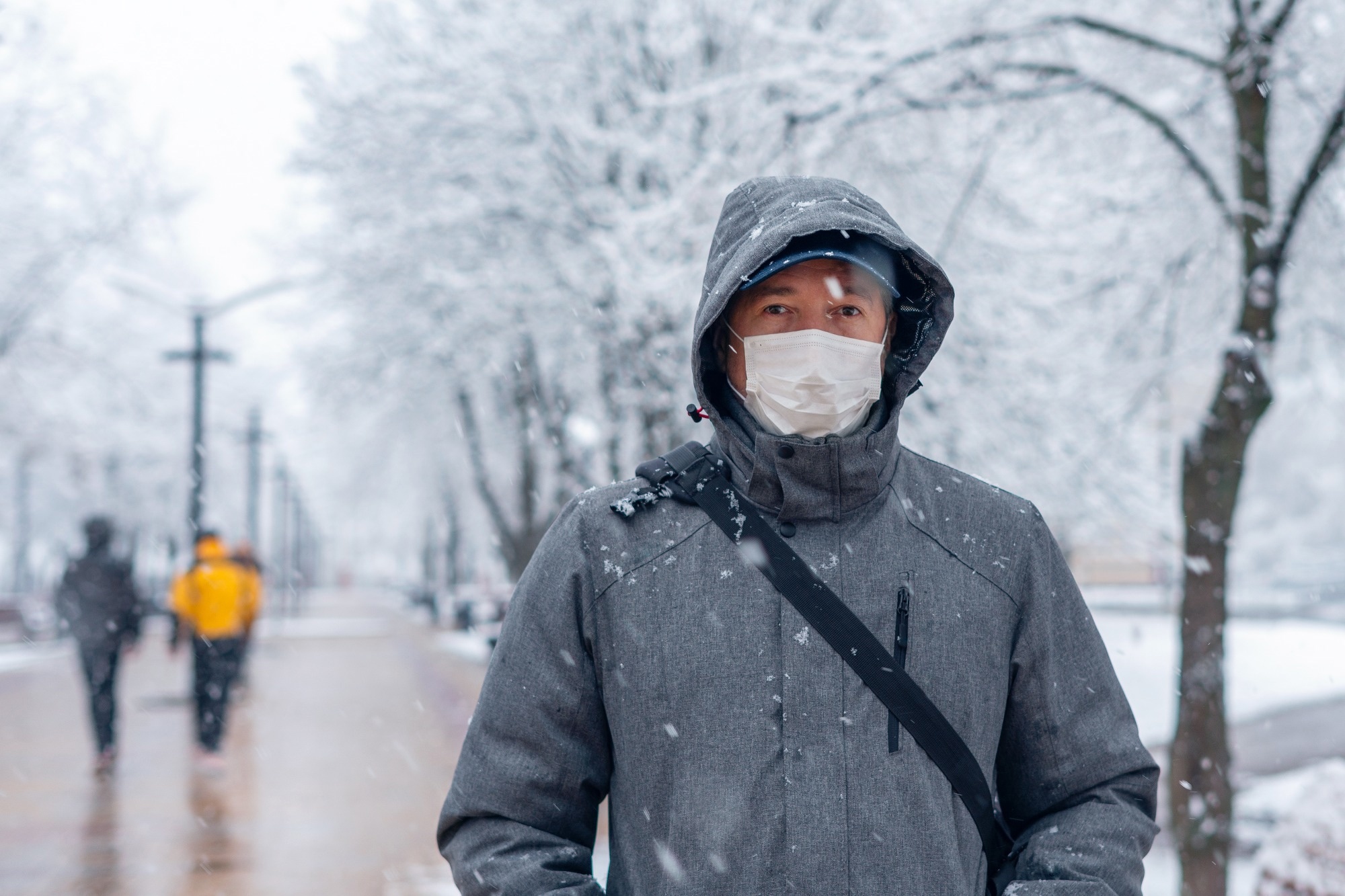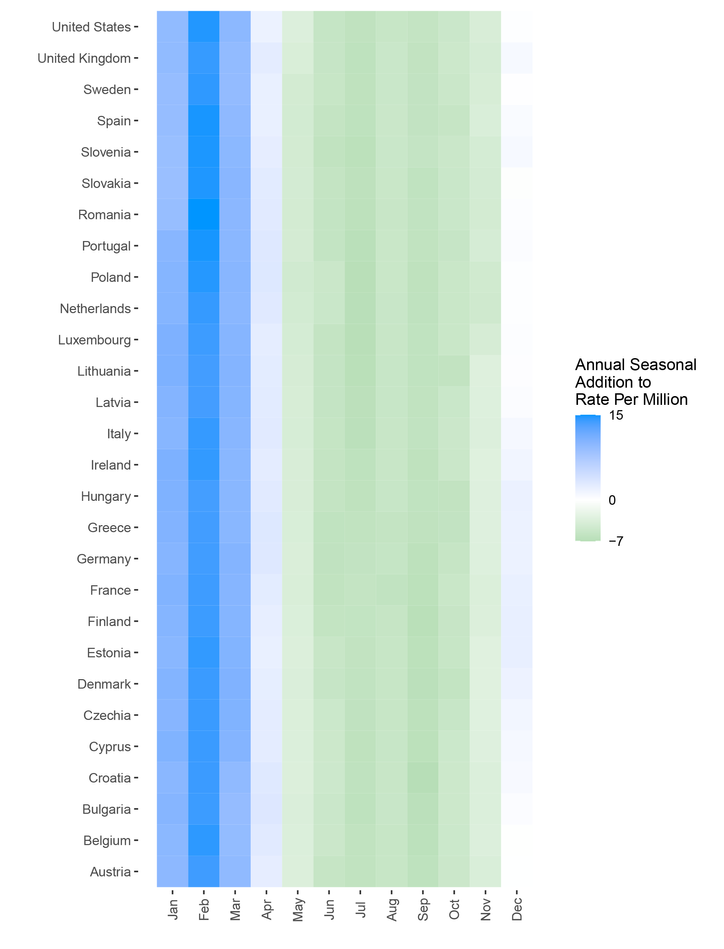In a recent study posted to the Research Square* preprint server, researchers from Columbia University Mailman School of Public Health, Pfizer Inc, and the University of Iowa assessed the seasonal trends observed in coronavirus disease 2019 (COVID-19) cases, hospitalizations, and deaths.
In the winter, several respiratory viruses cause waves of disease that follow specific seasonal patterns. In addition to increased indoor activity and seasonal weather variations known to affect viral stability outside the host, these trends are probably the result of a confluence of hosts, pathogens, and environmental factors. Therefore, extensive research is needed to determine whether severe acute respiratory syndrome coronavirus 2 (SARS-CoV-2) currently follows or will eventually follow seasonal patterns similar to these other respiratory viruses.
About the study
In the present study, researchers assessed the seasonal patterns observed in COVID-19 cases, hospitalizations, and deaths in the US and Europe using time series models.
The ecological investigation was conducted by adhering to the Strengthening the Reporting of Observational Studies in Epidemiology (STROBE) standards. The Our World in Data (OWID) GitHub repository was used to obtain daily rates of COVID-19 infections, hospitalizations, and mortalities observed per million population by the country for the US, the UK, and all of the European Union's member countries. Data utilized for the study was recorded between 1 March 2020 and 31 July 2022 as available by country.
The team decomposed daily country-specific time series rates corresponding to COVID-19 cases, hospitalizations, and fatalities individually using a Prophet time series model. Furthermore, the time series model was adjusted for the nation stringency index.
Results
The study results showed that the model demonstrated clear annual seasonality consistent across all the SARS-CoV-2 infections, hospitalizations, and death rates recorded between November and April 2021. The yearly seasonal component's additional impact on cases was the most significant between January and March 2021, with a peak additional seasonal rate value of 905 cases observed per 1,000,000 persons.
 Study: Seasonal trends in COVID-19 cases, hospitalizations, and deaths in the United States and Europe. Image Credit: fanasiev Andrii / Shutterstock
Study: Seasonal trends in COVID-19 cases, hospitalizations, and deaths in the United States and Europe. Image Credit: fanasiev Andrii / Shutterstock

 This news article was a review of a preliminary scientific report that had not undergone peer-review at the time of publication. Since its initial publication, the scientific report has now been peer reviewed and accepted for publication in a Scientific Journal. Links to the preliminary and peer-reviewed reports are available in the Sources section at the bottom of this article. View Sources
This news article was a review of a preliminary scientific report that had not undergone peer-review at the time of publication. Since its initial publication, the scientific report has now been peer reviewed and accepted for publication in a Scientific Journal. Links to the preliminary and peer-reviewed reports are available in the Sources section at the bottom of this article. View Sources
With up to 100 additional seasonal hospitalizations per 1,000,000noted between November and April, the annual seasonal component for hospitalizations demonstrated a clear distinction between seasons. With an additional two mortalities per 1,000,000 people as a result of the annual seasonal effect, which is predominantly concentrated from November through February, COVID-19-associated mortality showed a similar pattern in the annual seasonal component. All of the countries assessed showed similar patterns. The annual seasonality of pre-pandemic influenza that was consistently observed between December and April over twelve US influenza seasons was also demonstrated by the precise model specifications described for rates of COVID-19.

Heatmap of the influenza percent positivity median annual seasonal component by month, Oct 2009 through Dec 2021. Data Source: World Health Organization
Conclusion
The study findings showed that despite continuous COVID-19 transmission throughout the year, the number of COVID-19 cases, hospitalizations, and deaths was the highest during the winter viral respiratory season in the US and Europe. Therefore, the researchers suggest using annual preventative measures against SARS-CoV-2, such as the administration of seasonal booster vaccines or other non-pharmaceutical interventions to the general public in a timeframe similar to those employed for influenza prevention to curb COVID-19 transmission.

 This news article was a review of a preliminary scientific report that had not undergone peer-review at the time of publication. Since its initial publication, the scientific report has now been peer reviewed and accepted for publication in a Scientific Journal. Links to the preliminary and peer-reviewed reports are available in the Sources section at the bottom of this article. View Sources
This news article was a review of a preliminary scientific report that had not undergone peer-review at the time of publication. Since its initial publication, the scientific report has now been peer reviewed and accepted for publication in a Scientific Journal. Links to the preliminary and peer-reviewed reports are available in the Sources section at the bottom of this article. View Sources
Journal references:
- Preliminary scientific report.
Timothy L Wiemken, Farid Khan, Laura Puzniak et al., Seasonal trends in COVID-19 cases, hospitalizations, and deaths in the United States and Europe, 16 September 2022, PREPRINT (Version 1) available at Research Square, DOI: https://doi.org/10.21203/rs.3.rs-2037950/v1, https://www.researchsquare.com/article/rs-2037950/v1
- Peer reviewed and published scientific report.
Wiemken, Timothy L., Farid Khan, Laura Puzniak, Wan Yang, Jacob Simmering, Philip Polgreen, Jennifer L. Nguyen, Luis Jodar, and John M. McLaughlin. 2023. “Seasonal Trends in COVID-19 Cases, Hospitalizations, and Mortality in the United States and Europe.” Scientific Reports 13 (1). https://doi.org/10.1038/s41598-023-31057-1. https://www.nature.com/articles/s41598-023-31057-1.